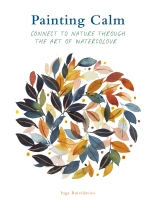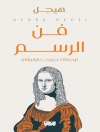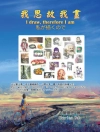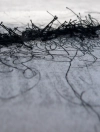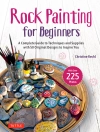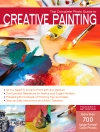Find inner calm and happiness in this beautiful, meditative and earthy watercolour instruction book from nature lover, teacher and artist Inga Buivadavice.
Art therapy and the act of
painting is widely acknowledged to bring
positive mental health benefits
, as it helps us centre ourselves, focus our intentions and engage creatively with the world around us. This beautiful guided watercolour book
combines these aspects with the healing powers of nature to take you on a journey toward peace and tranquility.
Even if you have no experience with watercolours or painting,
Painting Calm’s accessible and
easy-to-follow
prompts will allow you to express yourself and
create with ease and joy . Gather inspiration from artist Inga Buivadavice’s beautiful illustrations, designed to capture an
emotional connection with the natural world through texture and colour, as you explore:
- An overview of watercolour painting supplies and how to use them
- Basic watercolour techniques and colour theory
- Exercises for finding inspiration in nature
- Seasonal projects that include painting trees, leaves, flowers, natural light and patterns found in nature
- Tips for building a creative practice
Discover your inner artist – and forge a new and powerful relationship to nature – in this calming project book, as you
watercolour your way to mindful wellbeing.
Tabela de Conteúdo
Sample TOC
INTRODUCTION 6
• About author’s journey of finding watercolour, wellbeing & creative mindfulness.
WHY WATERCOLOUR? NATURE & MINDFULNESS 10
• The art of letting go, mindfulness (watercolour has a mind of its own and teaches us to not try to control it but flow with it). Wellbeing through creativity.
• Emotional connection through awareness, feelings, love, and respect. We are nature. Creating your own paths and ways of seeing.
• Find your own way to connect with nature. Bring “you” into the natural world through painting, find a personal path you can relate to – colours, compositions or other creative elements – and connect with it.
• Let go of perfection. Find joy in the imperfection of nature and the world around you.
• Developing your style.
GETTING STARTED 22
• Watercolour paints and pigments – types and how use them.
• Brushes – different brushstrokes you can achieve.
• Paper – the range of papers that are availabile and tips on buying them.
• Other materials you might need.
• Basic techniques for beginners – layering paint, using wet on wet, wet on dry and other effects.
• Colour theories you can apply – mixing colours, achieving different hues, limiting colour palette, creating colour swatches, and tell a story through the colour.
NATURE AS YOUR MUSE 36
• Let nature inspire the way that you use colour.
• Simple exercises: experiment with colour choices, simplification and use of detail through natural elements such as cacti, apples and moths.
• Bring texture from nature with different mediums. For example, pressed flowers, natural patterns and transferring them to the page through watercolour. Collect ideas in sketchbooks.
• See nature differently. Imagine a story through composition (how would botanicals look if you were laying on the grass and looking up, or from birds view, or very small like a bug). Painting grass and trees and transferring what you see to the page.
SEASONAL PROJECTS 78
• Painting trees
Focus on different types of brushstrokes and layering up paint, beginning with a simple tree and ending with a vibrant forest.
• Painting leaves
Simple and meditative exercise to start with the simplest shape possible and grow it into something very organic
• Painting flowers
• How to paint different types of flowers, developing into a colourful meadow. Make it free and organic – nature is free, dynamic and always in motion, create a movement with your composition
• Light & cycles
Bring focus into your composition. Imagine painting at different times of the day for example, golden hour just after sunrise, how would colours change? What you can see and what you can feel. Use limited colour palette with clear focal point
• Painting nature – nature is chaotic by nature
Bringing structure into chaos (we as humans want to organise everything but nature is chaotic, and also very organised if you pay close attention – the way plants grow, mathematical structural patterns not always visible to the naked eye. Playful insights into biomimicry, symmetry and using frames.
FINAL THOUGHTS 146
• Building creative practice – tips and tricks to build a good habit around being creative ‘on demand’, but to keep the flow and momentum.
• Making creative practice part of your lifestyle.
Resources/reading refs 154
• Podcasts, music, nature essays, and books on nature
• Index
• Acknowledgements
Sobre o autor
Inga Buividavice is a graphic artist and author based in Liverpool but originally from Lithuania. She graduated from Vilnius Academy of Arts with an MA in graphic design, and started hand drawing and painting in 2018. Her work centres on the natural world and its relation to the act of creating, and is inspired by plant and animal life around her.Instagram: @inga.buive
